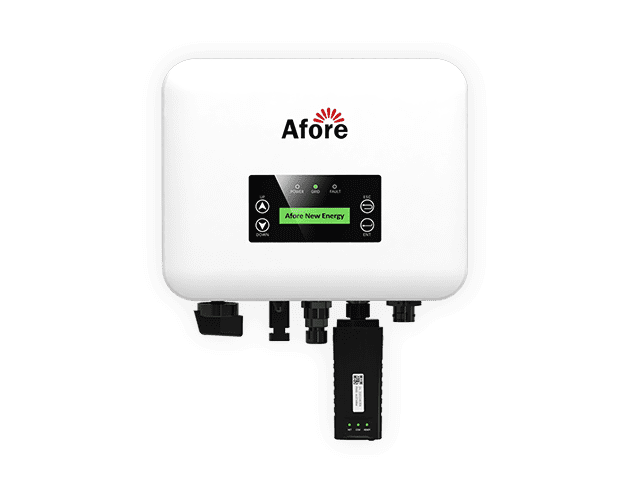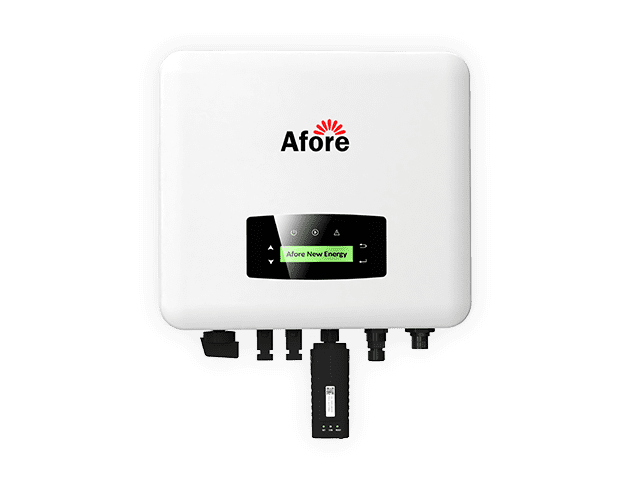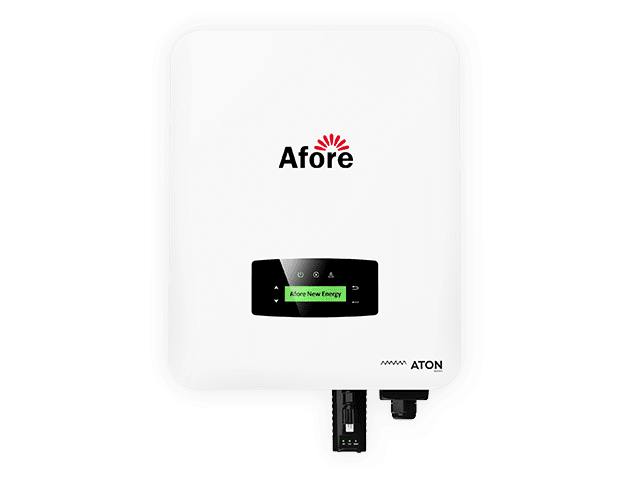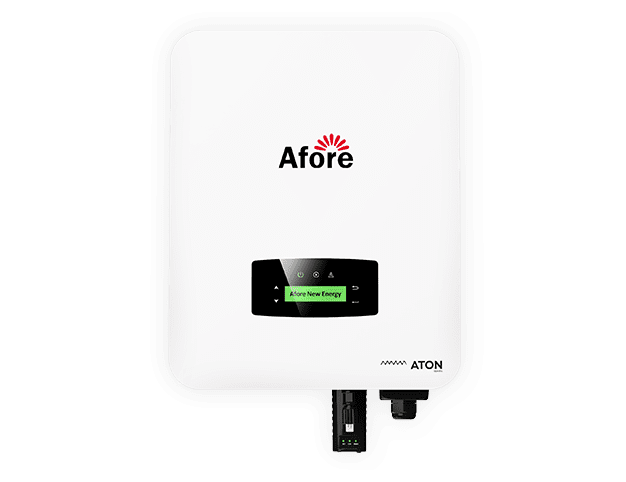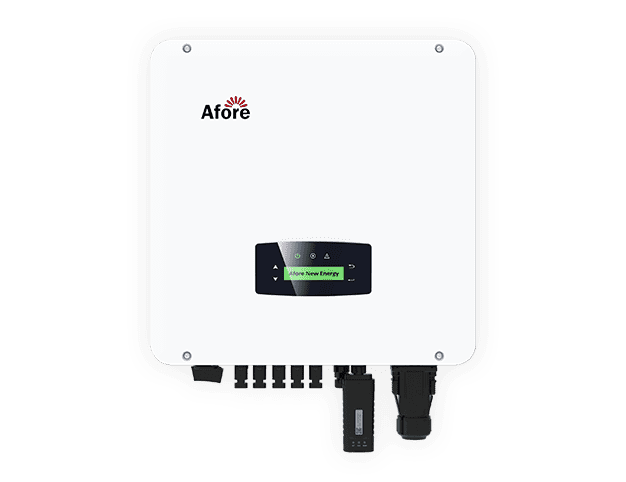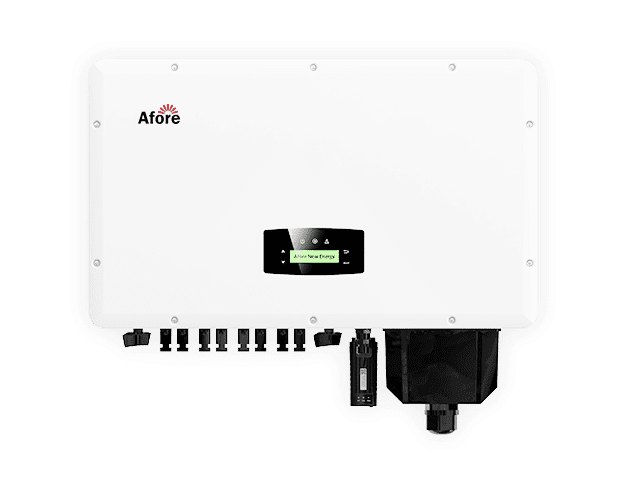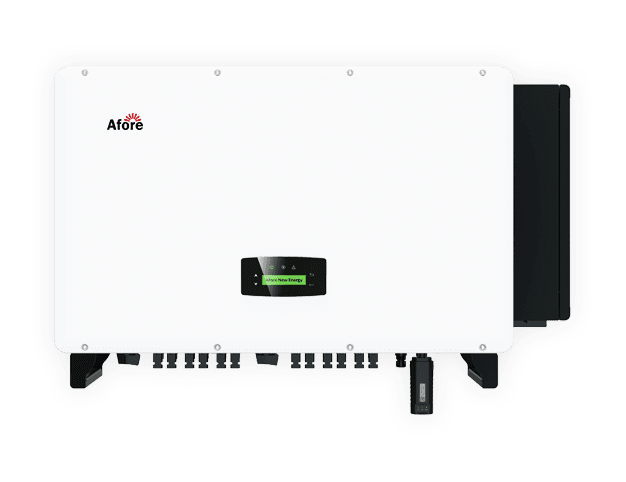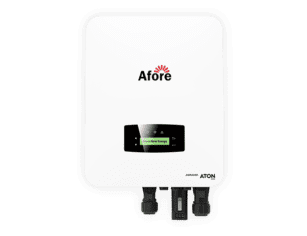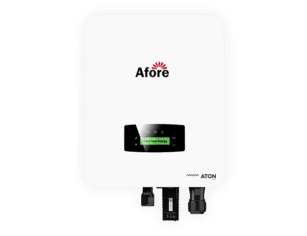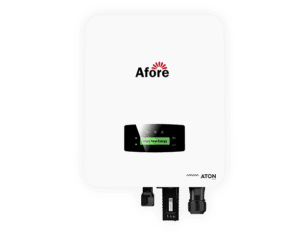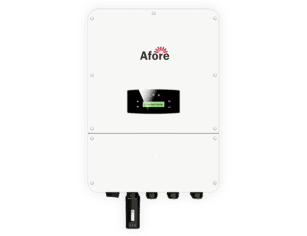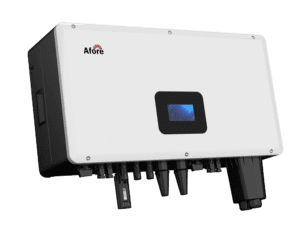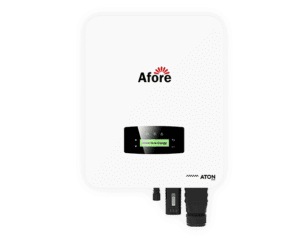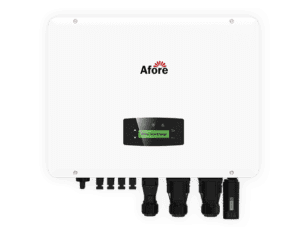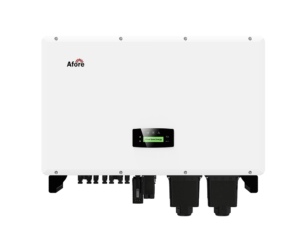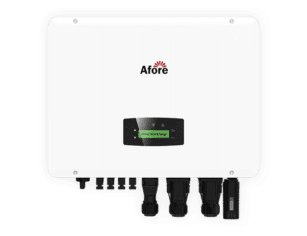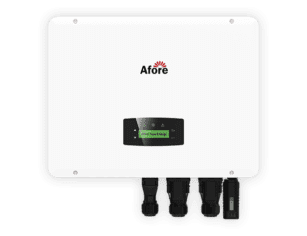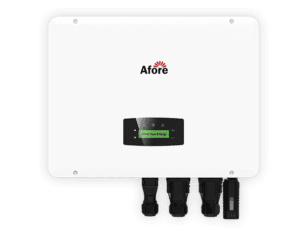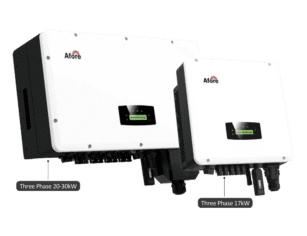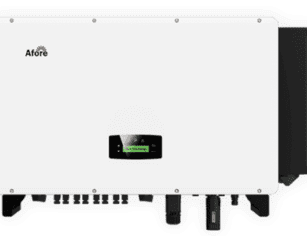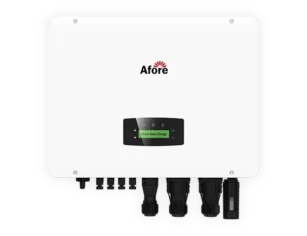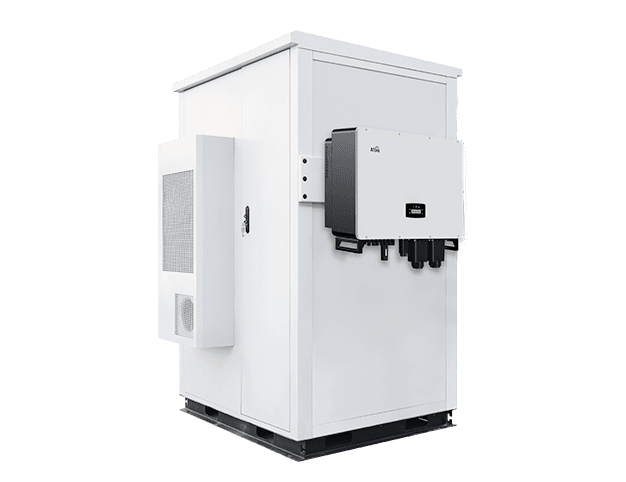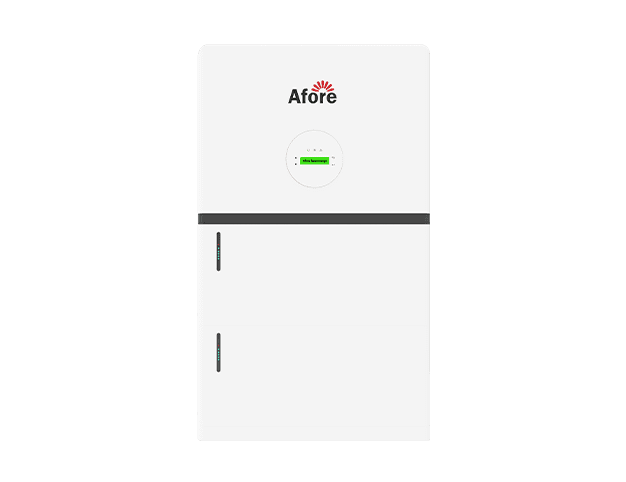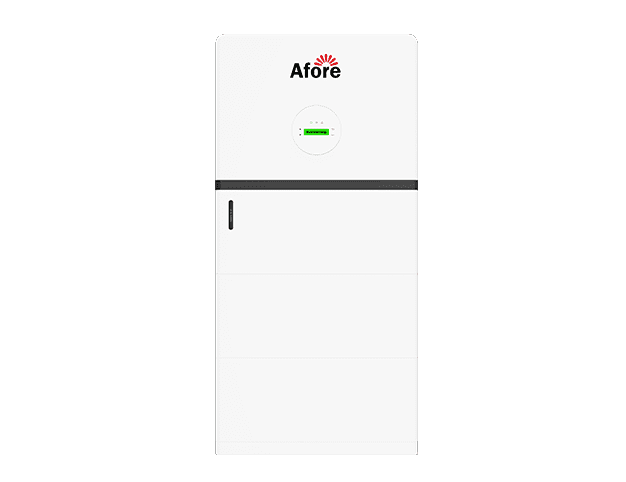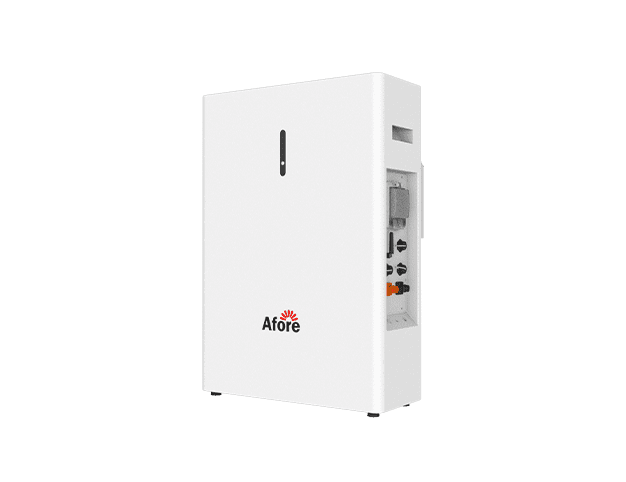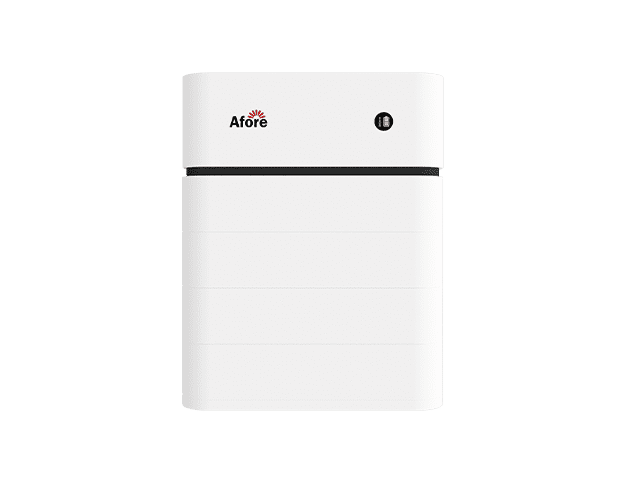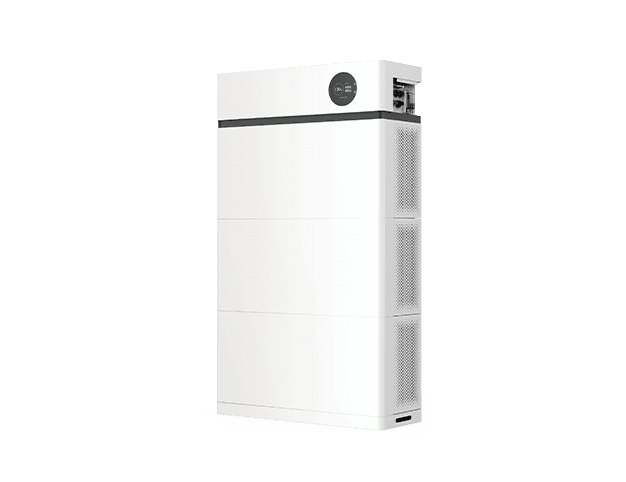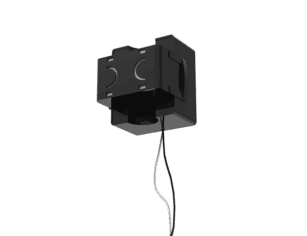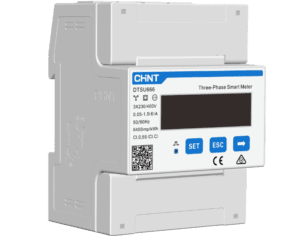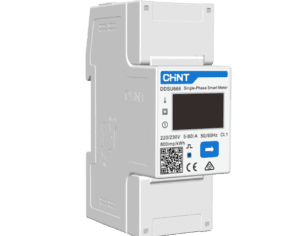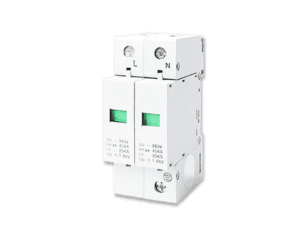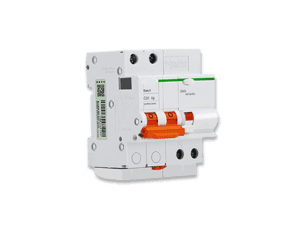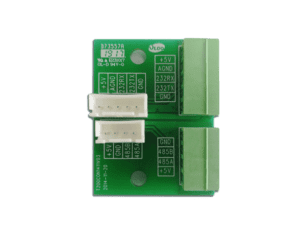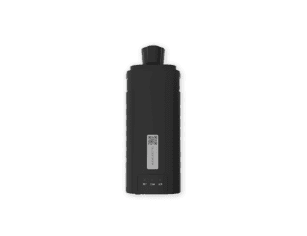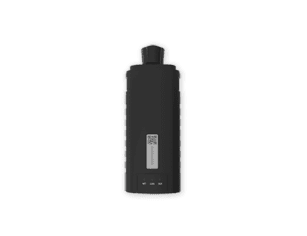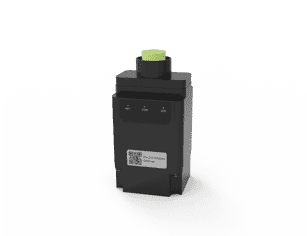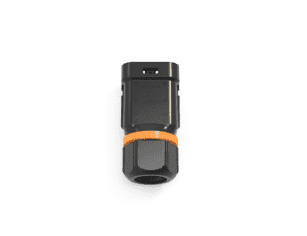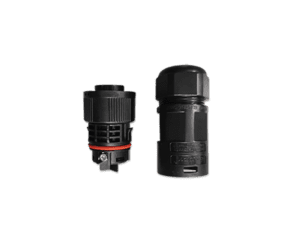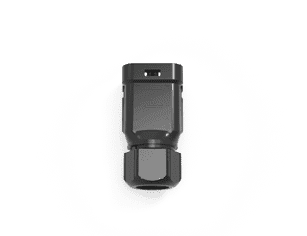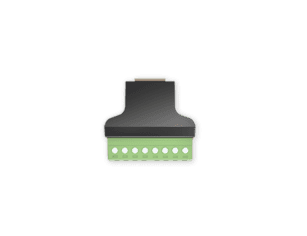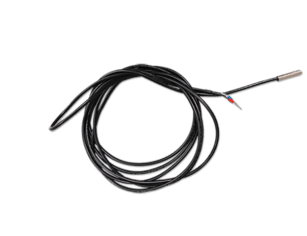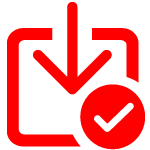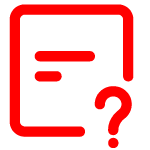Types de convertisseurs solaires : Fil, micro et hybride comparés
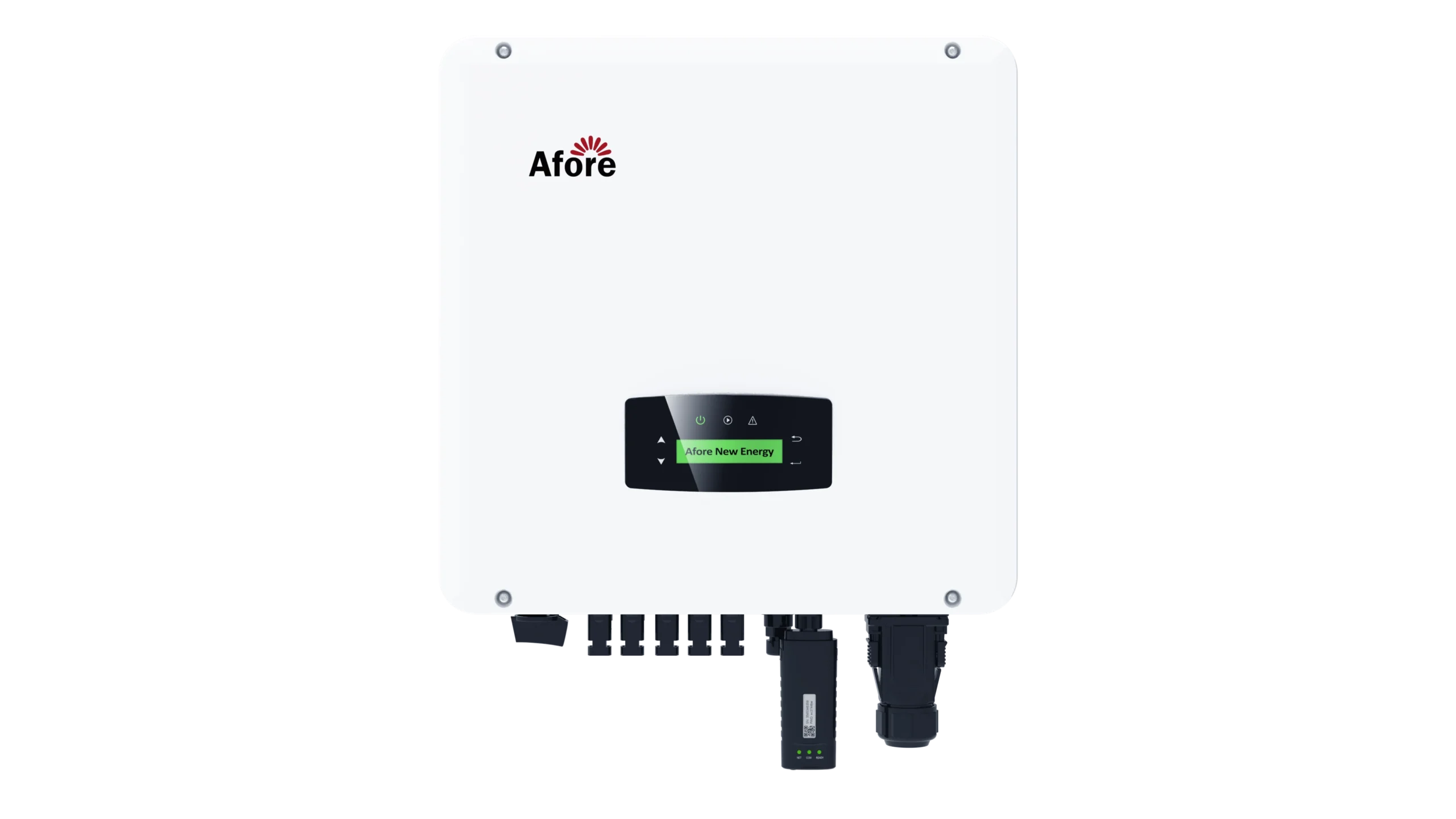
Table des matières
Si vous vous intéressez à l'énergie solaire, il y a de fortes chances que vous soyez tombé sur l'expression "types d'onduleurs solaires". Mais qu'est-ce qu'un onduleur solaire exactement, et pourquoi le choix du bon onduleur est-il déterminant pour les performances de votre système ? Décortiquons tout ce que vous devez savoir sur les différents types d'onduleurs solaires, sur leur fonctionnement et sur celui qui conviendrait le mieux à votre installation solaire.
Qu'est-ce qu'un onduleur solaire ?
À la base, un onduleur solaire est le cœur et le cerveau de tout système d'énergie solaire. Il s'agit du traducteur qui convertit le courant continu (CC) produit par vos panneaux solaires en courant alternatif (CA), le type d'électricité qui alimente votre maison ou votre entreprise. Sans ce dispositif essentiel, vos panneaux solaires produiraient de l'électricité que personne ne pourrait utiliser.
Mais tous les onduleurs solaires ne se valent pas. En fonction de la taille de votre système, de son emplacement et de vos objectifs énergétiques, le type d'onduleur solaire que vous choisissez peut avoir un impact significatif sur votre production globale d'énergie et sur la fiabilité de votre système.
Pourquoi le choix d'un bon onduleur solaire est-il important ?
Choisir le bon onduleur solaire n'est pas seulement un détail technique, c'est une décision stratégique. Le bon onduleur optimise la récolte d'énergie, maximise l'efficacité et peut même simplifier l'installation et la maintenance. En revanche, un onduleur mal choisi peut entraîner des pertes d'énergie, réduire la longévité du système ou compliquer les extensions futures.
Dans cet article, nous vous présentons les trois principaux types d'onduleurs solaires, leurs avantages et inconvénients respectifs, et comment choisir le meilleur pour votre projet solaire.
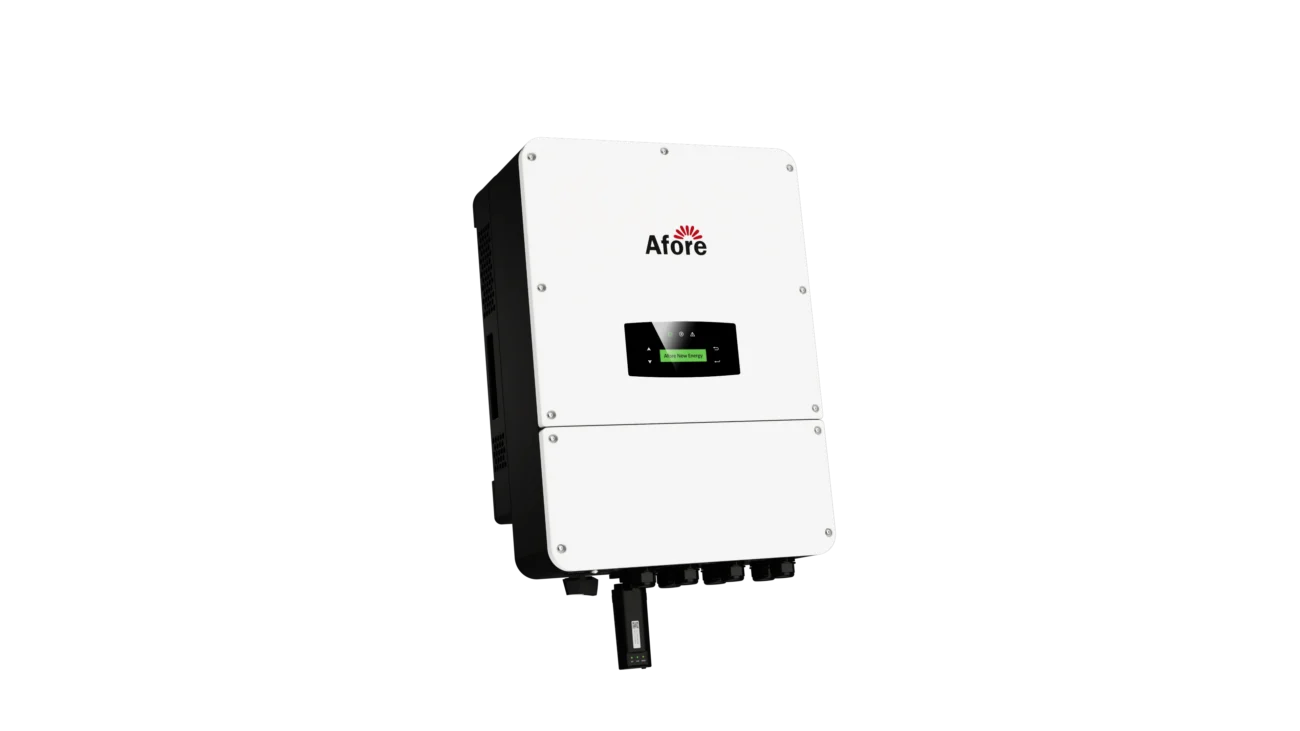
Aperçu des trois principaux types de convertisseurs solaires
Lorsque vous recherchez les meilleurs types d'onduleurs solaires pour votre maison ou votre système commercial, vous constaterez rapidement que le marché s'articule principalement autour de trois catégories clés : les onduleurs de branche, les micro-onduleurs et les onduleurs hybrides. Chaque type d'onduleur possède sa propre philosophie de conception, ses propres avantages et ses propres cas d'utilisation. La compréhension de ces différences peut faire la différence entre les performances et la rentabilité de votre système.
Examinons de plus près le fonctionnement de chaque type d'onduleur solaire et les raisons pour lesquelles vous pouvez en choisir un plutôt qu'un autre.
Onduleurs à cordes
Les onduleurs de branche sont de loin les plus courants parmi les différents types d'onduleurs solaires, et ce pour une bonne raison. Ils constituent la norme du secteur depuis des décennies et sont réputés pour leur simplicité, leur fiabilité et leur prix abordable.
Un onduleur de branche fonctionne en connectant plusieurs panneaux solaires en série, formant ce que l'on appelle une "branche". L'électricité en courant continu (CC) générée par chaque panneau circule le long de cette chaîne et est ensuite convertie en courant alternatif (CA) par un onduleur solaire unique et centralisé.
Avantages des onduleurs de branche :
- Rentable : Comme vous n'achetez et n'installez qu'un seul onduleur par système, le coût initial est nettement inférieur à celui des autres types d'onduleurs.
- Maintenance simple : Avec un point de conversion unique, le diagnostic et la maintenance peuvent être plus rapides et plus faciles, en particulier pour les professionnels de l'énergie solaire.
- Une technologie éprouvée : Ces systèmes sont largement utilisés et bien compris dans l'ensemble du secteur.
Limites des onduleurs à cordes :
- Sensibilité à l'ombre : Les performances de l'ensemble de la chaîne dépendent du panneau le moins productif. Si un panneau est ombragé, sale ou peu performant, il réduit la production de l'ensemble du système.
- Surveillance limitée : La plupart des onduleurs de branche n'offrent qu'une surveillance au niveau du système, ce qui signifie que vous ne verrez pas les performances des panneaux individuels.
Les meilleurs cas d'utilisation :
Les onduleurs de branche sont idéaux pour les systèmes installés sur des toits simples, non ombragés, où tous les panneaux sont orientés dans la même direction. Ils constituent un choix populaire pour les propriétés résidentielles bénéficiant d'une exposition solaire claire et de schémas d'ensoleillement prévisibles.
Micro-onduleurs
Les micro-onduleurs représentent une solution moderne et très efficace parmi les types d'onduleurs solaires. Au lieu d'utiliser un seul onduleur central, les micro-onduleurs sont de petits dispositifs installés directement à l'arrière de chaque panneau solaire. Chacun d'entre eux convertit le courant continu en courant alternatif de manière indépendante, ce qui rend l'ensemble du système plus résistant et plus adaptable.
Avantages des micro-onduleurs :
- Optimisation au niveau des panneaux : Chaque panneau ayant son propre onduleur, les problèmes d'ombrage ou de saleté sur un panneau n'affecteront pas les performances des autres.
- Conception flexible : Idéal pour les toits à angles multiples, les cheminées, les évents ou les ombrages partiels. Vous pouvez installer les panneaux dans différentes orientations sans compromettre l'efficacité.
- Surveillance détaillée : Vous obtenez des données de performance en temps réel au niveau du panneau, ce qui est extrêmement utile pour les diagnostics et l'optimisation de la production d'énergie.
- Protection de l'avenir : Il est plus facile d'étendre votre système au fil du temps puisque chaque nouveau panneau comprend son propre onduleur.
Inconvénients des micro-onduleurs :
- Coût initial plus élevé : Un plus grand nombre d'onduleurs implique des coûts de matériel et d'installation plus élevés.
- Installations plus complexes : Chaque panneau nécessite sa propre installation, ce qui peut augmenter légèrement le temps de travail et les coûts.
- Accessibilité pour les réparations : En cas de défaillance d'un micro-onduleur, il peut être nécessaire de retirer le panneau solaire pour y accéder, ce qui complique la maintenance.
Les meilleurs cas d'utilisation :
Les micro-onduleurs sont la solution idéale pour les toits complexes, les toits partiellement ombragés ou lorsque les propriétaires souhaitent obtenir le meilleur rendement énergétique et connaître les performances de chaque panneau. Ils sont particulièrement bien adaptés aux maisons urbaines et aux projets solaires où l'optimisation de chaque watt est importante.
Onduleurs hybrides
Onduleurs hybrides gagnent rapidement en popularité dans le monde des énergies renouvelables, d'autant plus que de plus en plus de particuliers et d'entreprises ajoutent des batteries de stockage à leurs systèmes solaires. Comme leur nom l'indique, les onduleurs hybrides combinent deux technologies : un onduleur solaire traditionnel pour convertir le courant continu généré par les panneaux en courant alternatif, et un onduleur de batterie pour gérer les systèmes de stockage d'énergie.
Principales caractéristiques des onduleurs hybrides :
- Double fonction : Ils gèrent à la fois la sortie du panneau solaire et les cycles de charge/décharge de la batterie. Il n'est donc plus nécessaire d'utiliser deux onduleurs distincts, ce qui permet de rationaliser votre système énergétique.
- Indépendance énergétique : En stockant l'énergie solaire excédentaire pour l'utiliser pendant la nuit ou en cas de panne du réseau, les onduleurs hybrides permettent une plus grande autosuffisance et une plus grande tranquillité d'esprit.
- Gestion intelligente de l'énergie : De nombreux modèles hybrides sont dotés de fonctions intelligentes de contrôle de l'énergie qui vous permettent d'optimiser le moment où vous utilisez l'énergie solaire, la batterie ou le réseau.
Avantages des onduleurs hybrides :
- Système intégré : Un seul appareil gère à la fois la production solaire et la gestion du stockage.
- Économies au fil du temps : Bien que les coûts initiaux soient plus élevés, les économies à long terme peuvent être substantielles, en particulier dans les régions où l'électricité est facturée en fonction de l'heure de consommation.
- Préparation à l'avenir : Les onduleurs hybrides sont un excellent choix si vous prévoyez d'installer des batteries maintenant ou plus tard.
Défis des onduleurs hybrides :
- Complexité : l'installation d'un système hybride nécessite une plus grande planification, en particulier si vous l'intégrez à des connexions au réseau et à des batteries existantes.
- Investissement initial plus élevé : Ces onduleurs coûtent généralement plus cher au départ que les onduleurs de branche ou les micro-onduleurs.
Les meilleurs cas d'utilisation :
Les onduleurs hybrides sont idéaux pour les propriétaires désireux d'être indépendants sur le plan énergétique, de résister aux pannes de courant et de maximiser l'utilisation de l'énergie solaire autoproduite. Ils constituent également une option intelligente dans les régions où le réseau n'est pas fiable ou où les coûts de l'électricité sont élevés.
Dernières réflexions sur ces types d'onduleurs
Chacun de ces types d'onduleurs solaires a une fonction distincte, et il n'existe pas de " meilleure " option universelle, mais uniquement la meilleure option pour votre situation unique. Que vous cherchiez à minimiser les coûts initiaux, à optimiser les performances dans des conditions difficiles ou à assurer la pérennité de votre système énergétique grâce au stockage sur batterie, il est essentiel de comprendre les nuances des onduleurs de branche, des micro-onduleurs et des onduleurs hybrides.
Dans la section suivante, nous nous pencherons plus en détail sur une comparaison directe de ces types d'onduleurs solaires afin de vous aider à prendre une décision éclairée qui corresponde à vos besoins énergétiques, à votre budget et à vos objectifs à long terme.
Comparaison détaillée : Onduleurs de branche vs Micro-onduleurs vs Onduleurs hybrides
Le choix entre les différents types d'onduleurs solaires n'est pas seulement une question de préférence : il s'agit de trouver le bon équilibre entre les performances, le coût et la valeur à long terme. Dans cette section, nous allons comparer les onduleurs de branche, les micro-onduleurs et les onduleurs hybrides sur plusieurs points clés afin de vous aider à évaluer ce qui convient le mieux à votre projet solaire.
Efficacité et performance
Lorsqu'il s'agit des performances d'un onduleur solaire, il ne suffit pas de prendre en compte l'efficacité brute de la conversion. Il faut également tenir compte de la façon dont chaque système réagit aux défis environnementaux tels que l'ombrage, les différences d'orientation et la dégradation des panneaux au fil du temps.
Les onduleurs de branche ont généralement un rendement de conversion élevé (environ 95-98%), mais leurs performances peuvent être affectées lorsqu'un ou plusieurs panneaux de la branche ne sont pas assez performants. Comme tous les panneaux sont câblés en série, si l'un d'entre eux est ombragé ou fonctionne mal, il réduit la production de l'ensemble de la chaîne, à l'instar d'une guirlande lumineuse de Noël dont l'une des ampoules est morte.
Les micro-onduleurs, en revanche, brillent dans des conditions complexes. Chaque panneau fonctionne indépendamment avec son propre système de suivi du point de puissance maximale (MPPT), ce qui permet au système de maintenir des performances optimales même si certains panneaux sont ombragés ou souillés. Cela se traduit souvent par un gain net d'énergie de 5-25% par rapport aux onduleurs de branche dans des conditions réelles, en particulier sur les toits où l'exposition au soleil est inégale.
Les onduleurs hybrides ont généralement le même rendement de conversion que les onduleurs de branche, mais ils ajoutent des fonctions de gestion de la batterie. Leur véritable avantage réside dans l'optimisation de l'énergie : ils stockent l'énergie solaire excédentaire pendant la journée et la déploient la nuit ou pendant les périodes de pointe. Associés à une surveillance intelligente, ils garantissent qu'aucun watt n'est gaspillé.
Installation et entretien
D'un point de vue pratique, l'installation et la maintenance continue peuvent avoir un impact majeur sur les coûts du projet et la fiabilité à long terme du système. Les différents types d'onduleurs solaires sont plus ou moins complexes.
Les onduleurs de branche offrent le processus d'installation le plus simple. Avec une seule unité centrale montée près du panneau électrique, les installateurs n'ont qu'à faire passer le câblage des branches du panneau à l'onduleur. La maintenance est également plus facile car il n'y a qu'un seul onduleur à dépanner ou à remplacer. Cependant, la localisation des problèmes au niveau du panneau peut s'avérer difficile sans une surveillance avancée.
Les micro-onduleurs nécessitent plus de travail au départ. Chaque onduleur est monté sous ou à proximité d'un panneau, ce qui signifie qu'il y a plus de composants à installer et à configurer. Bien que cela ajoute du temps et des coûts à l'installation, cela facilite également les diagnostics à long terme : si un panneau ne fonctionne pas correctement, vous saurez exactement lequel et pourquoi. Mais n'oubliez pas que pour accéder à un micro-onduleur défectueux, il faut souvent remonter sur le toit et retirer temporairement le panneau, ce qui peut compliquer l'intervention.
Les onduleurs hybrides se situent entre les deux. Ils sont centralisés comme les onduleurs de branche, mais impliquent un câblage et une configuration supplémentaires pour les connexions à la batterie. Si vous installez un parc de batteries à côté de votre installation solaire, la configuration hybride peut réduire le nombre total d'appareils nécessaires. Du point de vue de la maintenance, il s'agit d'un système plus technique, mais qui peut être géré par un professionnel qualifié. Et comme de nombreux systèmes offrent une surveillance à distance, les problèmes mineurs peuvent souvent être détectés et traités de manière proactive.
Analyse des coûts
Il est essentiel de comprendre les implications financières de chaque type d'onduleur solaire, en particulier lorsqu'il s'agit de mettre en balance l'accessibilité financière à court terme et les bénéfices à long terme. Examinons les principaux aspects financiers :
Les onduleurs de branche sont généralement l'option la plus économique. Avec moins de composants et une installation plus simple, ils ont tendance à avoir les coûts initiaux les plus bas. Ils sont donc intéressants pour les propriétaires ou les entreprises qui cherchent à maximiser le retour sur investissement dans des systèmes bénéficiant d'un ensoleillement constant et d'un ombrage minimal.
Les micro-onduleurs coûtent cher. La nécessité d'installer un onduleur par panneau fait grimper les coûts de matériel et de main-d'œuvre. Toutefois, cette dépense initiale plus élevée peut être compensée par une production d'énergie accrue dans des conditions moins idéales, ce qui permet de réaliser des économies plus importantes au fil du temps, en particulier si votre toit a plusieurs orientations ou s'il est souvent ombragé.
Les onduleurs hybrides sont les plus chers parmi les principaux types d'onduleurs solaires en raison de leur compatibilité avec les batteries intégrées. Cependant, pour les maisons facturées en fonction de l'heure de consommation ou dans les zones où les pannes sont fréquentes, la possibilité de stocker et de contrôler sa propre énergie peut permettre de réaliser des économies substantielles à long terme. Les systèmes hybrides offrent également une plus grande valeur ajoutée en termes de pérennité, car il est beaucoup plus facile d'ajouter des batteries ultérieurement.
| Type d'onduleur | Coût initial | Complexité de l'installation | RCI à long terme |
| Onduleur à cordes | Faible | Simple | Bon (si l'ensoleillement est constant) |
| Micro-onduleur | Moyenne-élevée | Modéré à élevé | Élevé (dans des conditions complexes) |
| Onduleur hybride | Haut | Modéré | Très élevé (avec utilisation de la batterie) |
Adaptation à différentes configurations de panneaux solaires
La conception du toit de votre maison, l'exposition au soleil et les projets futurs jouent un rôle important dans le choix du type d'onduleur solaire adapté à votre installation.
Les onduleurs de branche sont les mieux adaptés pour :
- Des toits ouverts avec une pente unique et une exposition constante au soleil
- Fermes solaires à grande échelle avec des panneaux uniformément alignés
- Projets à budget serré avec un minimum d'ombrage
Ils donnent le meilleur d'eux-mêmes dans des environnements propres et dégagés, où tous les panneaux peuvent fonctionner efficacement en tant qu'unité.
Les micro-onduleurs sont idéaux pour :
- Toitures à angles ou orientations multiples
- Milieux urbains avec ombrage partiel dû à des arbres, des cheminées ou des bâtiments avoisinants
- Les propriétaires qui souhaitent un suivi en temps réel et une production d'énergie maximale pour chaque panneau.
Ces onduleurs offrent la flexibilité nécessaire pour s'adapter à des dispositions irrégulières et à des conditions changeantes, ce qui permet de tirer le meilleur parti de l'espace disponible.
Les onduleurs hybrides sont parfaits pour :
- Les propriétaires qui prévoient d'installer des batteries solaires aujourd'hui ou à l'avenir
- Propriétés situées dans des zones où les pannes d'électricité sont fréquentes ou le réseau instable
- Utilisateurs d'énergie recherchant une indépendance hors réseau ou partiellement hors réseau
Les onduleurs hybrides comblent le fossé entre la production solaire sur le réseau et la fiabilité hors réseau, ce qui en fait un choix judicieux pour les personnes qui souhaitent bénéficier d'une flexibilité et d'une autonomie énergétiques.
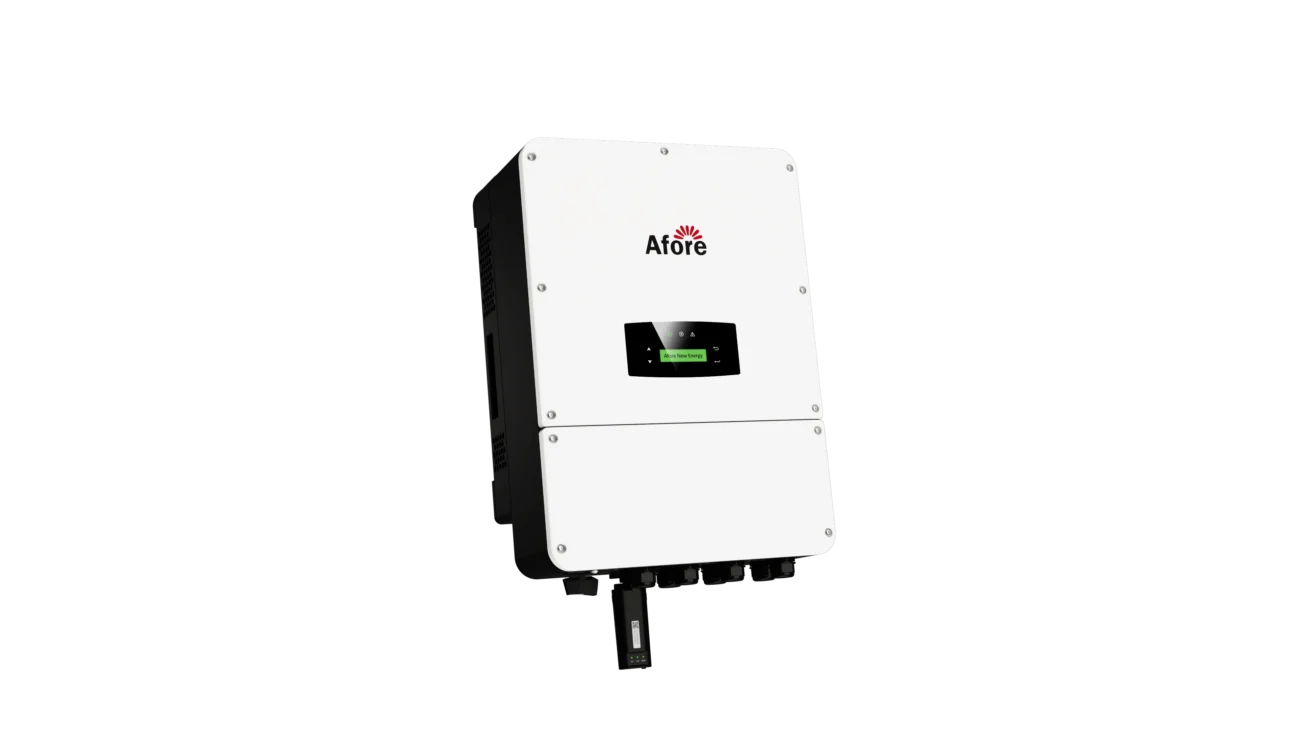
Comprendre les convertisseurs solaires MPPT
Qu'est-ce que le MPPT et pourquoi est-ce important ?
Le MPPT (Maximum Power Point Tracking) est une technologie sophistiquée intégrée dans la plupart des onduleurs solaires modernes. Elle ajuste en permanence la charge électrique de vos panneaux solaires afin de trouver le point idéal où ils produisent le maximum d'énergie possible.
Sans MPPT, vos panneaux solaires peuvent fonctionner en dessous de leur efficacité optimale, en particulier lorsque les conditions d'ensoleillement changent en raison des nuages, de l'ombrage ou des fluctuations de température.
Les différences entre les onduleurs MPPT et les onduleurs traditionnels
Les onduleurs traditionnels convertissent le courant continu en courant alternatif mais n'ont pas la capacité d'optimiser dynamiquement la puissance de sortie. Les onduleurs MPPT, en revanche, ajustent intelligemment la tension et le courant, garantissant que votre système tire chaque watt de vos panneaux.
Rôle du MPPT dans la maximisation de la récolte d'énergie solaire
En s'assurant que les panneaux fonctionnent à leur point de puissance maximale, les onduleurs solaires équipés de la technologie MPPT peuvent augmenter la récolte d'énergie jusqu'à 30%, ce qui change la donne en matière d'efficacité des systèmes solaires et de retour sur investissement.
Comment choisir le meilleur type de convertisseur solaire pour vos besoins
Avec toutes les informations disponibles et les trois types d'onduleurs solaires parmi lesquels il faut choisir, il est facile de se sentir dépassé. Mais la vérité est que trouver le bon onduleur solaire ne doit pas être compliqué. Comme pour tout investissement important, il s'agit de comprendre vos objectifs énergétiques, les réalités physiques de votre maison ou de votre bâtiment et la flexibilité dont vous avez besoin pour l'avenir.
Cette section vous présente les éléments à prendre en compte avant de prendre une décision finale et vous offre des conseils d'experts pour vous aider à faire votre choix.
Facteurs à prendre en compte
Pour choisir entre les différents types d'onduleurs solaires, il faut d'abord se poser les bonnes questions. Voici ce que les professionnels de l'énergie solaire recherchent généralement lorsqu'ils évaluent le meilleur onduleur pour une installation donnée :
1. Conception des toits et ombrage
La disposition de votre toit et l'ensoleillement qu'il reçoit tout au long de la journée sont des facteurs importants. Si vos panneaux sont installés sur un toit simple, orienté vers le sud et sans obstacles, un onduleur de branche peut être plus que suffisant.
Toutefois, si votre toit présente plusieurs pentes, est orienté dans différentes directions ou est partiellement ombragé par des arbres, des cheminées ou des bâtiments voisins, les micro-onduleurs ou les onduleurs hybrides dotés de fonctions d'optimisation sont mieux adaptés. Ces types d'onduleurs peuvent gérer des performances variables de manière plus efficace en maximisant la production au niveau de chaque panneau.
2. Taille et évolutivité du système
Si vous prévoyez un système de grande envergure ou si vous pensez l'étendre ultérieurement, examinez l'évolutivité de votre solution d'onduleur. Les onduleurs de branche peuvent prendre en charge plusieurs branches, mais l'ajout ultérieur de panneaux peut nécessiter le remplacement de l'onduleur complet. Les micro-onduleurs, en revanche, sont modulaires : il suffit d'ajouter un autre panneau avec son propre onduleur. Les onduleurs hybrides offrent également des possibilités d'extension, en particulier si vous envisagez d'intégrer un système de stockage par batterie.
3. Modes d'utilisation de l'énergie
Quand consommez-vous le plus d'électricité ? Si votre foyer est absent pendant la journée et consomme plus d'électricité le soir, vous pourriez bénéficier d'un onduleur hybride qui stocke l'énergie solaire dans une batterie en vue d'une utilisation ultérieure. À l'inverse, si votre consommation correspond aux heures de la journée, un onduleur string standard peut s'avérer très utile.
4. Préférences en matière de surveillance
Êtes-vous le genre de propriétaire qui aime vérifier souvent les performances de son système ? Souhaitez-vous être alerté lorsque quelque chose ne fonctionne pas correctement ? Les micro-onduleurs et certains onduleurs hybrides avancés offrent une surveillance au niveau du panneau par le biais d'applications pour smartphone, ce qui vous permet d'obtenir des informations détaillées et d'accélérer le dépannage.
5. Budget et retour sur investissement
Le coût initial est toujours un facteur à prendre en considération. Les onduleurs de branche sont les plus abordables à installer, ce qui les rend intéressants pour les budgets serrés. Mais si votre site n'est pas idéal (ombre ou disposition irrégulière), les micro-onduleurs ou les onduleurs hybrides peuvent offrir un meilleur rendement au fil du temps en captant davantage d'énergie utilisable.
6. Fiabilité du réseau et besoins de secours
Si votre région connaît des pannes fréquentes, ou si vous souhaitez réduire votre dépendance au réseau électrique, un onduleur hybride avec intégration de la batterie est un choix judicieux. Il vous permet de stocker de l'énergie et de l'utiliser lorsque vous en avez le plus besoin, sans dépendre uniquement du réseau électrique.
Recommandations d'experts et cas d'utilisation courants
Vous ne savez toujours pas quelle voie emprunter ? Voici comment les professionnels de l'énergie solaire adaptent généralement chacun des types d'onduleurs solaires à des scénarios réels :
Recommandations pour les onduleurs de branche
Meilleur pour :
- Maisons aux toits simples et non ombragés
- Propriétaires soucieux de leur budget
- Systèmes ne prévoyant pas d'expansion future
Pourquoi les experts le recommandent :
Les onduleurs String ont fait leurs preuves. Ils sont fiables, faciles à installer et rentables. Si vous disposez d'un toit idéal (pas d'ombrage, bonne orientation et ensoleillement constant), il n'y a aucune raison de se compliquer la vie.
Exemple de cas d'utilisation :
Une maison de banlieue à deux étages avec un toit orienté vers le sud et sans arbres à proximité. Le propriétaire recherche un retour sur investissement solide avec un minimum d'entretien.
Recommandations concernant les micro-onduleurs
Meilleur pour :
- Propriétés avec ombrage partiel ou géométrie de toit complexe
- Systèmes avec panneaux orientés dans des directions différentes
- Les propriétaires qui accordent de l'importance à la surveillance et à l'optimisation
Pourquoi les experts le recommandent :
Les micro-onduleurs vous aident à exploiter chaque watt de votre potentiel, même dans des conditions moins que parfaites. Ils sont idéaux pour tirer le maximum d'efficacité de chaque panneau et sont particulièrement utiles sur les toits qui ne sont pas orientés plein sud ou qui présentent des obstacles.
Exemple de cas d'utilisation :
Une maison de ville avec une surface de toit limitée, dont une partie est ombragée le matin. Le propriétaire souhaite contrôler la production de chaque panneau et maximiser la production tout au long de l'année.
Recommandations concernant les onduleurs hybrides
Meilleur pour :
- Maisons équipées de batteries solaires ou prévoyant d'en ajouter
- Sites où le réseau électrique n'est pas fiable ou où les tarifs de pointe de l'électricité sont élevés
- Les propriétaires visent l'indépendance énergétique
Pourquoi les experts le recommandent :
Les onduleurs hybrides vous donnent le contrôle. Ils sont intelligents, flexibles et à l'épreuve du temps, en particulier si votre plan à long terme prévoit de vous déconnecter partiellement ou totalement du réseau. Grâce au stockage sur batterie intégré au système, vous êtes à l'abri de l'augmentation des tarifs de l'électricité et des coupures de courant.
Exemple de cas d'utilisation :
Une maison rurale sujette aux pannes de réseau. Le propriétaire installe un système solaire avec un onduleur hybride et une batterie de stockage pour garantir la disponibilité de l'électricité même en cas de panne du réseau.
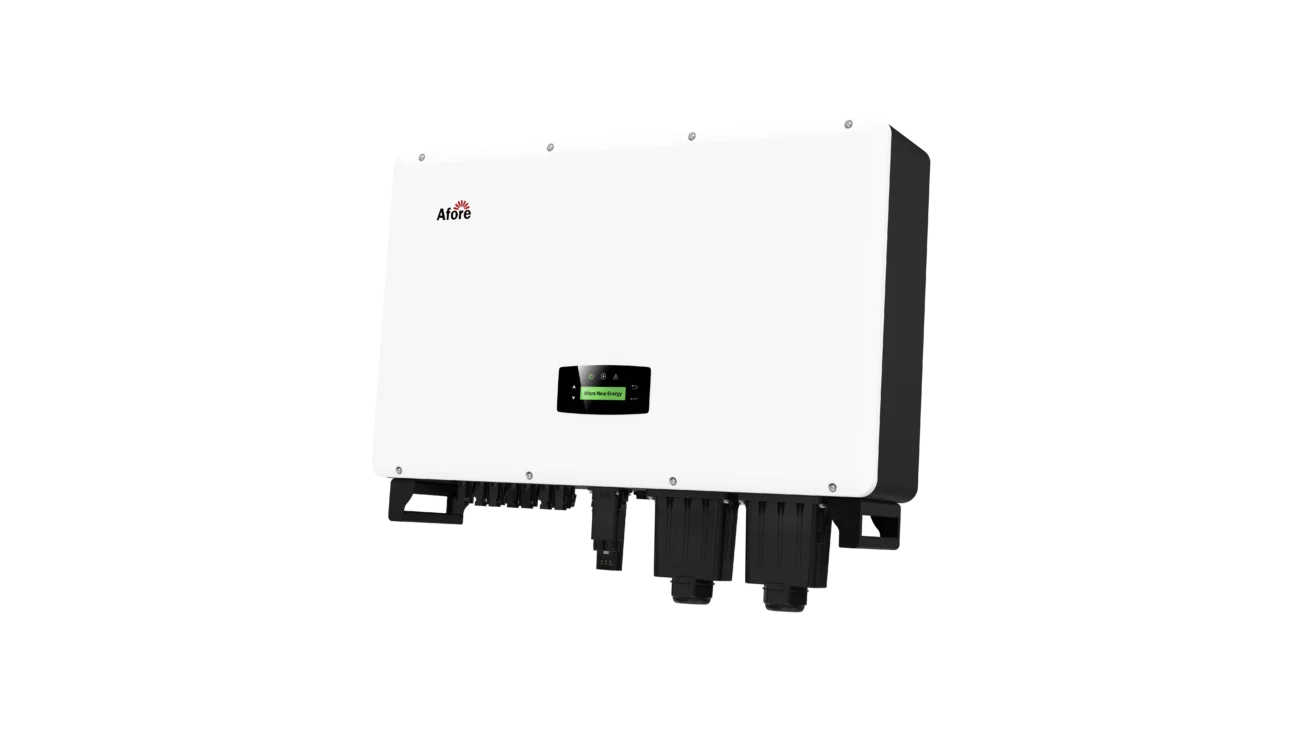
Conclusion
Il est essentiel de comprendre les différents types d'onduleurs solaires pour tirer le meilleur parti de votre investissement solaire. De la simplicité économique des onduleurs de branche à l'optimisation au niveau du panneau des micro-onduleurs, en passant par la capacité de stockage d'énergie des onduleurs hybrides, chaque type d'onduleur offre des avantages uniques. Tenez compte des conditions de votre toit, de vos objectifs énergétiques et de votre budget pour choisir le meilleur onduleur solaire pour un avenir plus vert et plus intelligent.
Questions fréquemment posées
1. Quel est le meilleur type d'onduleur pour l'énergie solaire ?
Il n'existe pas de réponse unique à cette question. Le meilleur onduleur solaire pour votre système dépend de vos conditions et objectifs spécifiques.
- Si votre toit bénéficie d'un ensoleillement constant et d'un ombrage minimal, un onduleur de branche peut être la solution la plus rentable et la plus efficace.
- Si vous avez une configuration de toit plus complexe ou un ombrage partiel, les micro-onduleurs maximiseront la performance au niveau du panneau.
- Si vous prévoyez d'ajouter des batteries ou si vous souhaitez disposer d'une alimentation de secours en cas de panne, un onduleur hybride est probablement la meilleure option.
Consulter un installateur solaire agréé est le meilleur moyen de déterminer quel type d'onduleur solaire convient le mieux à votre propriété.
2. Quels sont les trois principaux types d'onduleurs ?
Les trois types d'onduleurs solaires les plus courants utilisés dans les systèmes résidentiels et commerciaux sont les suivants :
- Onduleurs de chaîne - unités centralisées qui convertissent le courant continu en courant alternatif pour un groupe (ou chaîne) de panneaux solaires.
- Micro-onduleurs - petits onduleurs individuels installés sur chaque panneau pour la conversion locale de courant continu en courant alternatif.
- Onduleurs hybrides - systèmes polyvalents qui gèrent à la fois la conversion solaire et le stockage sur batterie.
Chaque type joue un rôle différent en fonction de la configuration, de l'échelle et de la stratégie en matière d'énergie solaire.
3. Les micro-onduleurs sont-ils meilleurs que les onduleurs de branche ?
Les micro-onduleurs offrent des avantages indéniables, en particulier dans les installations où les conditions varient d'un panneau à l'autre, comme sur les toits à orientations multiples ou ombragés. Chaque panneau fonctionnant indépendamment, les micro-onduleurs peuvent augmenter la production totale du système jusqu'à 25% dans des conditions difficiles.
Toutefois, les onduleurs de branche sont souvent plus rentables et plus simples à entretenir, en particulier pour les installations simples et sans ombrage. La notion de "mieux" dépend donc du contexte. Dans de nombreux cas, la différence se résume à l'optimisation des performances par rapport au coût initial.
4. Qu'est-ce qu'un onduleur solaire MPPT ?
Un onduleur solaire MPPT (Maximum Power Point Tracking) est un dispositif qui ajuste automatiquement la tension et le courant pour garantir que vos panneaux solaires fonctionnent à leur point le plus efficace. Cette technologie est intégrée dans la plupart des onduleurs solaires modernes, en particulier les modèles de type string, micro et hybride.
Le MPPT permet de maximiser la récolte d'énergie tout au long de la journée, même lorsque l'intensité de la lumière du soleil varie en raison des nuages ou des angles changeants, en " suivant " constamment le point de puissance optimal des panneaux.
5. Comment les onduleurs hybrides fonctionnent-ils avec le stockage sur batterie ?
Les onduleurs hybrides intègrent les fonctions solaires et de batterie en une seule unité transparente. Pendant la journée, l'onduleur dirige l'électricité solaire pour alimenter votre maison, charger vos batteries ou envoyer l'énergie excédentaire vers le réseau. La nuit, ou lorsque le réseau s'arrête, il tire l'énergie stockée de la batterie pour faire fonctionner vos appareils.
Ce contrôle intelligent fait des onduleurs hybrides l'épine dorsale des maisons autonomes en énergie et des systèmes prêts pour les micro-réseaux.
6. 6. Puis-je mélanger différents types d'onduleurs dans un système solaire ?
Dans la plupart des cas, il n'est pas recommandé de mélanger différents types d'onduleurs solaires au sein d'un même système en raison de problèmes de compatibilité et de contrôle. Mélanger des onduleurs de branche et des micro-onduleurs, par exemple, peut créer des déséquilibres et des inefficacités.
Cela dit, dans le cas de très grands systèmes ou de systèmes à toits multiples, les professionnels conçoivent parfois des sous-systèmes distincts utilisant des onduleurs différents pour des zones distinctes. Si vous envisagez une approche hybride, consultez un ingénieur ou un installateur solaire qualifié pour obtenir une solution personnalisée.
7. 7. Quelle est la maintenance requise pour les onduleurs de branche par rapport aux micro-onduleurs ?
Les onduleurs de branche sont généralement dotés d'une unité centrale, ce qui facilite les inspections et les remplacements, mais la surveillance au niveau du système peut rendre la détection des problèmes plus difficile.
Les micro-onduleurs sont répartis sur chaque panneau, ce qui signifie qu'il est plus facile de diagnostiquer les problèmes avec des données au niveau du panneau. Cependant, l'accès à un micro-onduleur défectueux peut nécessiter le démontage du panneau auquel il est relié, ce qui augmente le temps et le coût de la maintenance.
Les deux types d'onduleurs solaires sont conçus pour durer de 10 à 25 ans avec un minimum d'entretien, mais des contrôles périodiques du système sont toujours une bonne idée.
8. 8. Les micro-onduleurs sont-ils adaptés aux grands systèmes commerciaux ?
Bien que les micro-onduleurs soient plus couramment utilisés dans les installations résidentielles, ils peuvent être appliqués à des projets commerciaux, en particulier ceux qui ont des toits complexes ou des conditions d'éclairage difficiles.
Toutefois, le coût unitaire plus élevé et le nombre accru de composants les rendent moins rentables pour les très grandes installations que les onduleurs de branche ou les onduleurs centraux conçus spécifiquement pour les systèmes à grande échelle.
9. Comment l'ombrage et l'orientation des panneaux affectent-ils le choix de l'onduleur ?
L'ombrage est l'un des principaux facteurs de sélection des différents types d'onduleurs solaires. Dans un environnement ombragé, les onduleurs de branche sont moins performants, car le panneau le plus faible fait baisser la production de l'ensemble de la branche.
En revanche, les micro-onduleurs et les optimiseurs de puissance permettent à chaque panneau de fonctionner indépendamment, minimisant ainsi l'impact d'un ombrage partiel ou d'angles d'inclinaison et d'azimut variés.
Si votre toit présente des obstacles ou est orienté dans plusieurs directions, optez pour des micro-onduleurs ou une solution hybride pour une récolte d'énergie maximale.
10. 10. Quelle est la durée de vie moyenne des différents types d'onduleurs solaires ?
Voici une brève description de la durée de vie typique d'un produit :
- Onduleurs de branche : 10 à 15 ans (certains durent plus longtemps s'ils sont bien entretenus)
- Micro-onduleurs : 20 à 25 ans (souvent égal à la durée de vie des panneaux solaires)
- Onduleurs hybrides : 10 à 15 ans, bien que les composants de la batterie puissent nécessiter un remplacement plus rapide en fonction des schémas d'utilisation.
Une surveillance et une maintenance régulières permettent de s'assurer que tout type d'onduleur solaire fonctionne de manière optimale tout au long de son cycle de vie.




